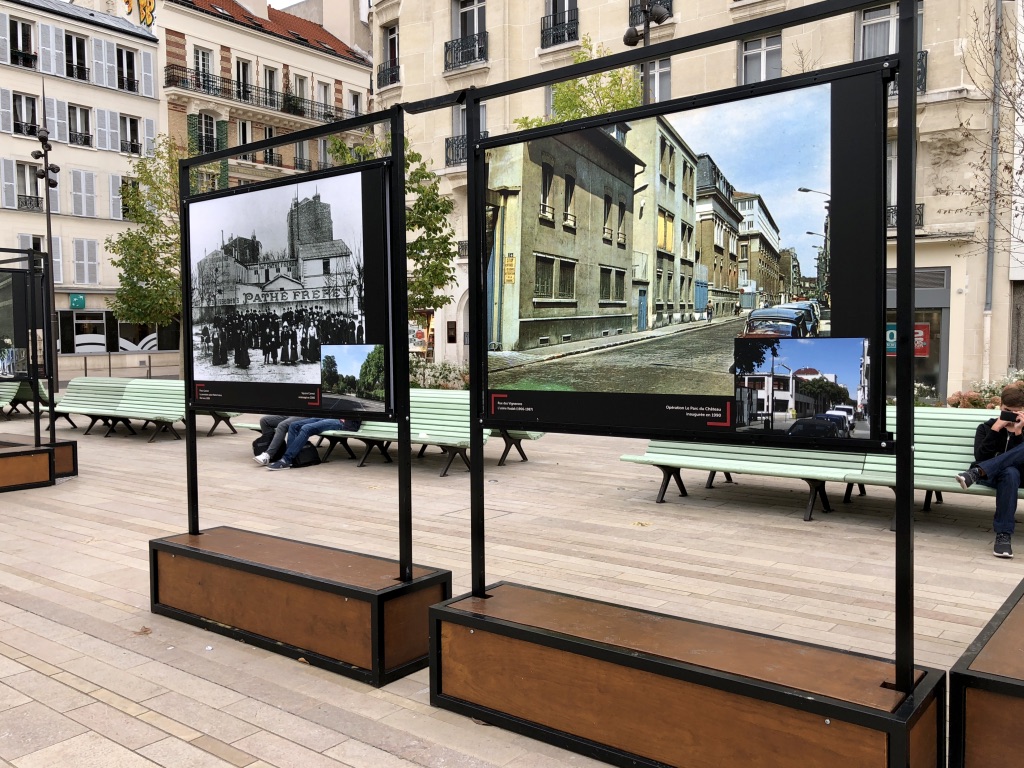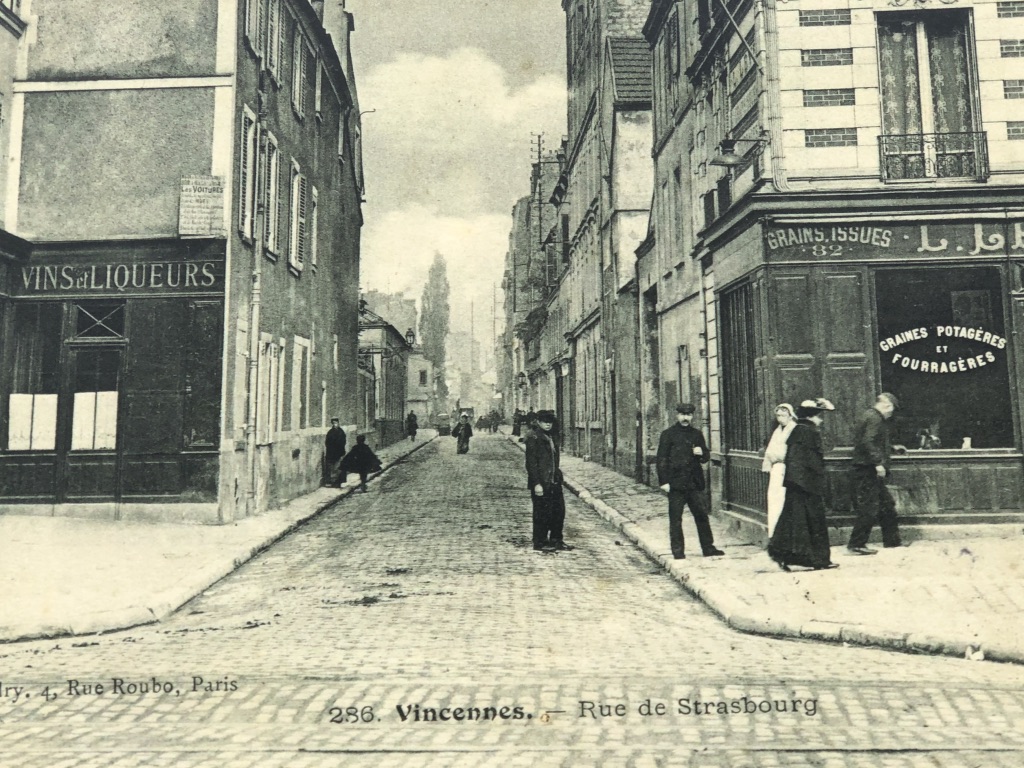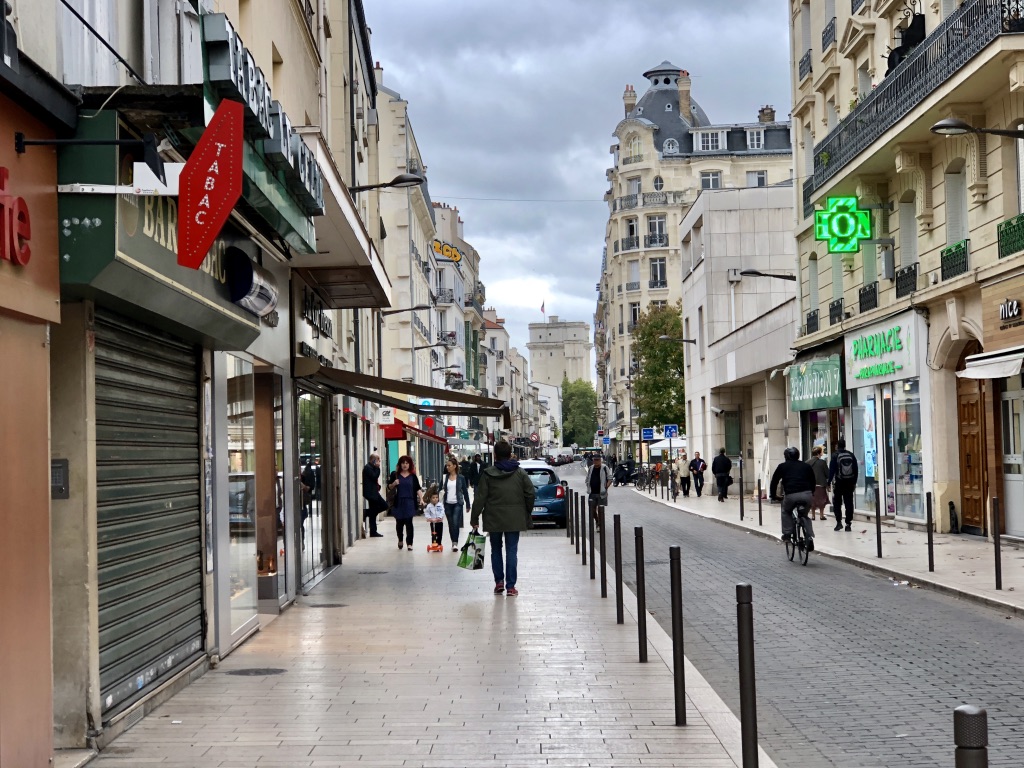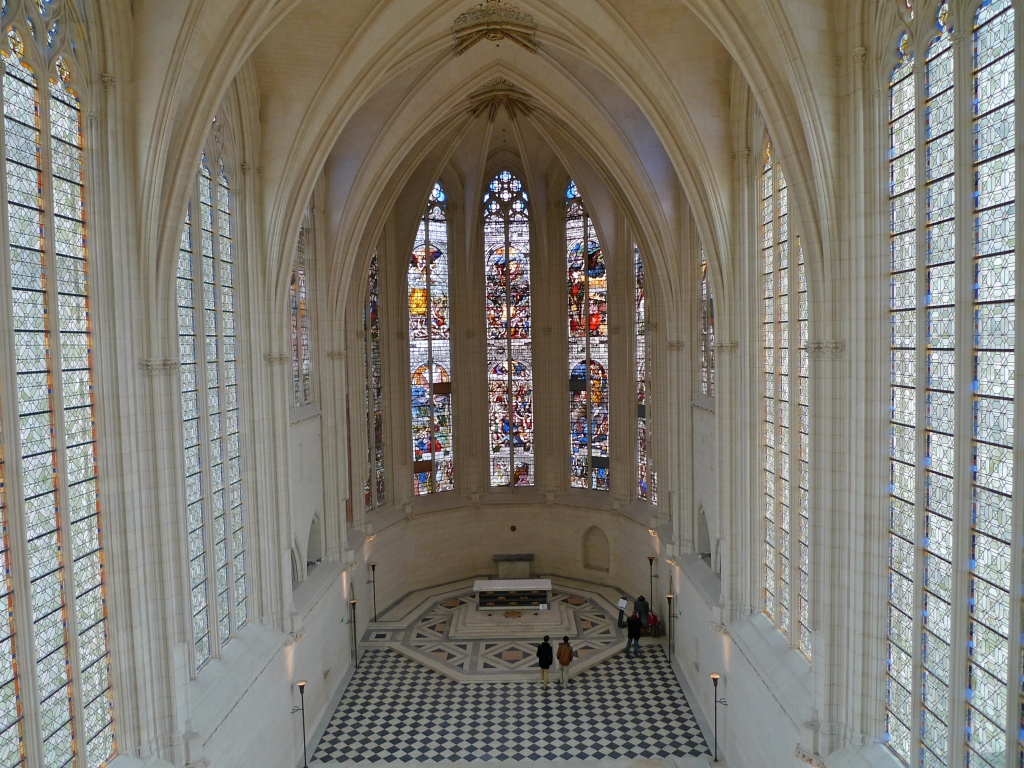End of the Line – Château de Vincennes
THE ‘END OF THE LINE’ STRAND in my Paris Soundscapes Archive is dedicated to the sounds I capture in and around each terminus station on the Paris Métro system. From time to time I will share the atmosphere of some of these terminus stations and their surroundings on this blog.
In my last ‘End of the Line’ post I explored in and around the Métro station Les Courtilles, the branch of Paris Métro Line 13 terminating in the northwest of Paris. Today, I will share with you my exploration in and around Métro station Château de Vincennes, the easterly terminus of Paris Métro Line 1.

Opened in 1900, Métro Line 1 was the first Paris Métro line to be opened although it was shorter then than it is now. Today, it runs for 16.5 km from La Défense in the west of the city to Château de Vincennes in the east and well over half a million people use it each day making it the busiest line on the Paris Métro system.
In 2007, work began to convert the line from being manually driven to becoming a fully automatic, driverless, operation. The work was completed in 2011 and involved the introduction of new MP 05 rolling stock and the erection of platform edge doors in all stations.

I recorded my arrival at Château de Vincennes station, a ride up a creaky escalator, a walk across the station concourse, up another escalator and out into the street above.
Arrival at Château de Vincennes:

Both the name of the station and a display in the station concourse give us a clue to at least one thing we might find outside.

Vincennes is a commune in the Val-de-Marne department in the eastern suburbs of Paris. As well as its famous castle, the Château de Vincennes, once home to French Kings, Vincennes is also known for the adjacent 995 hectare (2,459 acres) Bois de Vincennes, the largest public park in Paris, a zoo, the Paris Zoological Park, a botanical garden, the Parc Floral de Paris, and a large military fort once used as a proving ground for French armaments. Vincennes is also home to the Service Historique de la Défense, which holds the archival records of the French Armed Forces.
A short walk from the Métro station I discovered the Cours Marigny, a promenade between the Château de Vincennes and the Hôtel de Ville undergoing a makeover due to be completed in the Spring of 2018.

In the town square I found a display of old photographs showing Vincennes as it once was.


But in Vincennes, town and crown sit cheek by jowl so the château is never far away.

The Château de Vincennes is a massive former French royal fortress, which originated as a hunting lodge constructed for Louis VII around 1150 in the forest of Vincennes. In the 13th century, Philip Augustus and Louis IX, King of France from 1226 until his death during the eighth crusade in 1270, erected a more substantial manor.

King Louis IX – Saint Louis, outside the Château de Vincennes
By the 14th century, the Château de Vincennes had expanded and outgrown its original site. With the outbreak of the Hundred Years War, it became as much a fortress as a family home. Philip VI added a donjon, or fortified keep, which at 52 meters high was the tallest medieval fortified structure in Europe at the time. The grand rectangular circuit of walls was completed in about 1410.
The donjon served as a residence for the royal family and its buildings are known to have once held the library and personal study of Charles V. In 1422, seven years after his victory at Agincourt, Henry V of England died in the donjon from dysentery, which he had contracted during the siege of Meaux.
By the 18th century, the Château de Vincennes had ceased to become a practical fortress. Instead it became home to the Vincennes porcelain manufactory, precursor to the Sèvres porcelain factory, and the keep became a prison housing such distinguished guests as the Marquis de Sade, Diderot, and the French revolutionary, the Comte de Mirabeau,

Sounds around the Métro station Château de Vincennes :

To capture the ‘End of the Line’ atmosphere around the Métro station Château de Vincennes I recorded while sitting on a green bench alongside the wall and the moat on the western side of the château, close to one of the Métro entrances and even closer to the donjon and its bell tower. The sounds are the everyday sounds of this leafy part of Vincennes, including the chiming of the donjon bell.

In his book, Nairn’s Paris, a unique guide to Paris published in 1968, the British architectural critic, Ian Nairn, has a particular view about the Château de Vincennes:
“The château must be one of the most bad-tempered collections of buildings in the world, full of the prose of containment without any of the poetry of castellation. The vast medieval curtain-wall is opened out at the south end, towards the Bois, with grumpy classical buildings by Le Vau: on the north side there is the entrance tower, and brooding over the whole cross-grained mixture is the fourteenth-century donjon, which they say is the tallest in Europe; five huge storeys, surrounded by its own curtain-wall. Inside, the tall rooms, each heavily vaulted from a single pillar, give away nothing more than the facts of incarceration, if anything reinforced by the Gothic ribs and corbels that are familiar from less gloomy places. It is no illusion: Vincennes has a grim record and the tiny ill-light cells are still there to prove it.
[…]
One final view, the only soft thing at Vincennes: the eastern side of the moat, choked with big trees, Nature at last getting its own back on man. But the town that has grown up opposite this wicked uncle is as different as could be – a kind of French Aldershot. Vincennes has many barracks, some of them still inside the walls, and France has compulsory military service. Across the road from the château is a bus terminus, the end of a Métro, a line-up of cheerful cafés, and a considerable variety of, cheerful, cheap, not very good meals.”
Nairn’s Paris by Ian Nairn – Penguin Books (1968)
Just for clarification: For those not familiar with it, Aldershot, to which Ian Nairn refers, is a garrison town in the south of England, and France no longer has compulsory military service. The bus terminus, the end of the Métro and the line-up of cheerful cafés are still there and, although not as cheap as they were, some of the meals at least have improved!

Château de Vincennes
IT BEGAN LIFE in the mid 12th century as a royal hunting lodge in the forest of Vincennes in what is now the very east of Paris. By the 13th century, the hunting lodge had expanded into a more substantial royal manor, a favourite residence of Louis IX, Saint Louis, King of France from 1226 until his death during the eighth crusade in 1270 and the only French king to be canonised.
By the 14th century, the Château de Vincennes had expanded and outgrown the original site. With the outbreak of the Hundred Years War, it became as much a fortress as a family home. Work began on a donjon tower, or fortified keep, which, at 52 meters high, was the tallest medieval fortified structure in Europe.
The keep was completed in 1370 and it comprised a huge square tower flanked by four corner turrets. The tower is divided into six floors with rooms whose archways rest on a single slender central column. Each floor has the same layout with a large central hall and rooms in each corner turret.
During this period the Château de Vincennes was closely associated with Charles V, or Charles ‘the Wise’, as he became known. The donjon served as the residence for the royal family, and its buildings once held the library and personal study of Charles V.
After many years of archaeological and restoration work, the donjon is now open to the public. Access is gained from the chatelet, or gatehouse, in the courtyard via the oldest preserved example of an outwork staircase lit by five openings one above the other.
Climbing to the top of this staircase leads to the chatelet terrace with its magnificent view over the whole of the Château de Vincennes site.
The bell tower is also here. Built in 1369, this bell tower housed the very first public clock in France. Of all the clocks installed by Charles V in his Parisian residencies, this is the only one to survive.
The clock, located above the king’s study in the chatelet and on the same level as his bedchamber on the second floor of the keep, punctuated his life according to the canonical hours marking the daily offices devoted to prayer.
Just below the chatelet terrace is the chemin-de-ronde, the walkway around the battlements along which Charles V used to walk from his study to his apartment.
Crossing the footbridge, which was the only way into the keep in the Middle Ages, one comes to the Council Chamber where official receptions took place as well as meetings between the monarch and his advisors.
Beyond that is the bedchamber, the central room on the second floor with its beautiful fireplace. The king used to keep his finest manuscripts in a chest here placed in the west window recess.
Close by in the northwest turret is the treasury once home to sacks of gold and precious treasure.
Charles V was very fond of music and every day the finest musicians in France would attend upon the king and play music for him. In the king’s quarters in the donjon today an installation recreates the sound of the medieval music that Charles V may well have heard.
Medieval Music in the Keep:
There is an English connection to the medieval keep. In 1422, following the siege of Meaux, the English king, Henry V, victor of the battle of Agincourt, died here from dysentery.
By the 18th century, Château de Vincennes had ceased to become a practical fortress. Instead it became home to the Vincennes porcelain manufactory, the precursor to Sèvres porcelain factory and the keep became a state prison housing such distinguished guests as the Marquis de Sade, Diderot, and the French revolutionary, the Comte de Mirabeau,
Former prison cell with original graffiti
In 1379, Charles V ordered the building of a chapel opposite the keep modelled on Sainte-Chapelle in the Palais de la Cité in Paris, today called La Conciergerie. Although the work began under Charles V it was not until the reign of Henry II (1547-1559) that the chapel was finally completed. And the result is simply breathtaking.
Sounds inside Sainte-Chapelle:
The original bell dating from 1369 which was housed in the chatelet bell tower now rests here in Sainte-Chapelle.
The Château de Vincennes has always had a military connection. As well as being a medieval fortress, Napoleon I converted it into a military stronghold and it also served as the military headquarters of the Chief of General Staff, General Maurice Gamelin during the unsuccessful defence of France against the invading German army in 1940. It is now the main base of France’s Defence Historical Service, which maintains a museum in the donjon.
And one final thing, the spy, Mata-Hari, was executed here in 1917.























